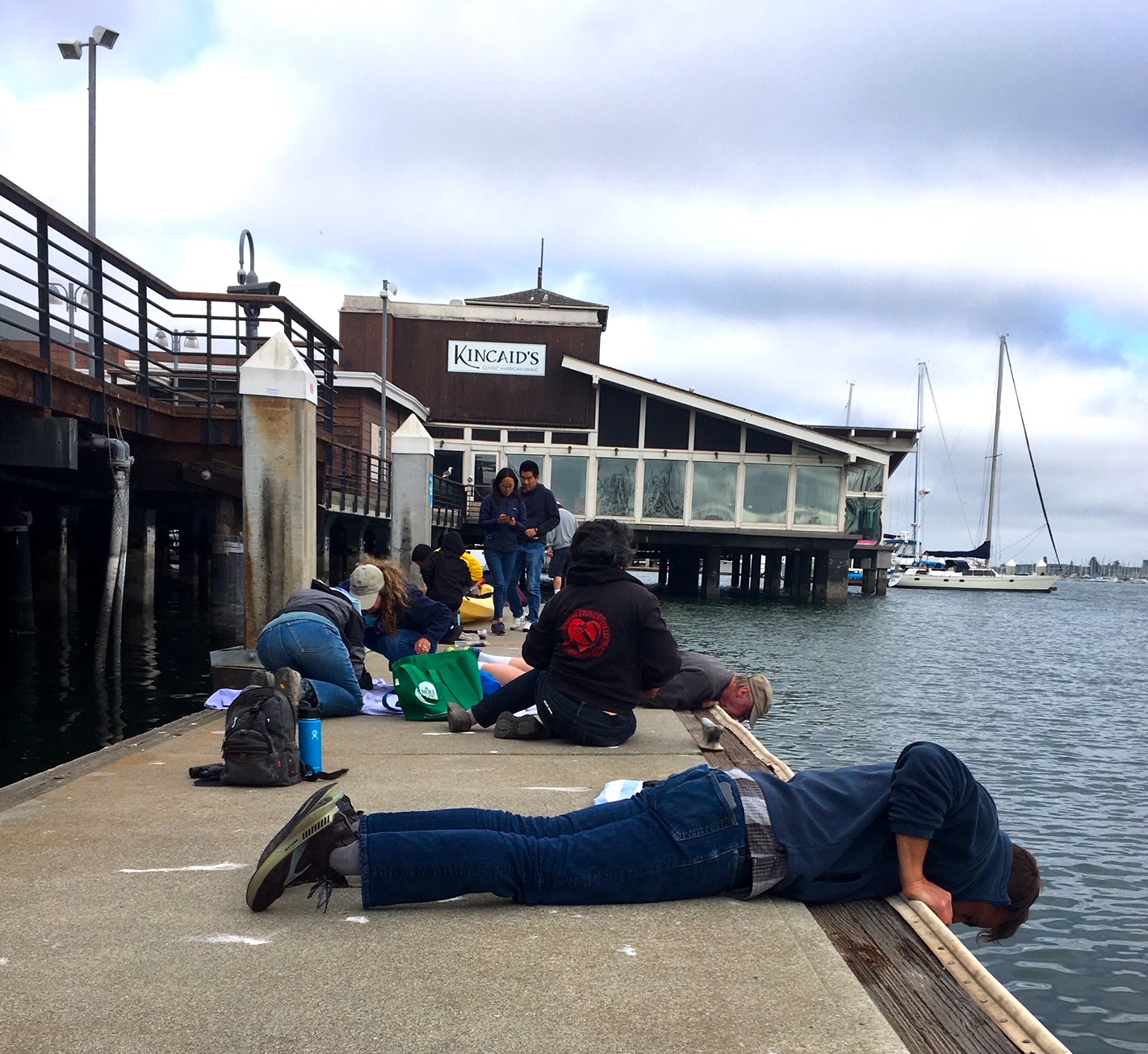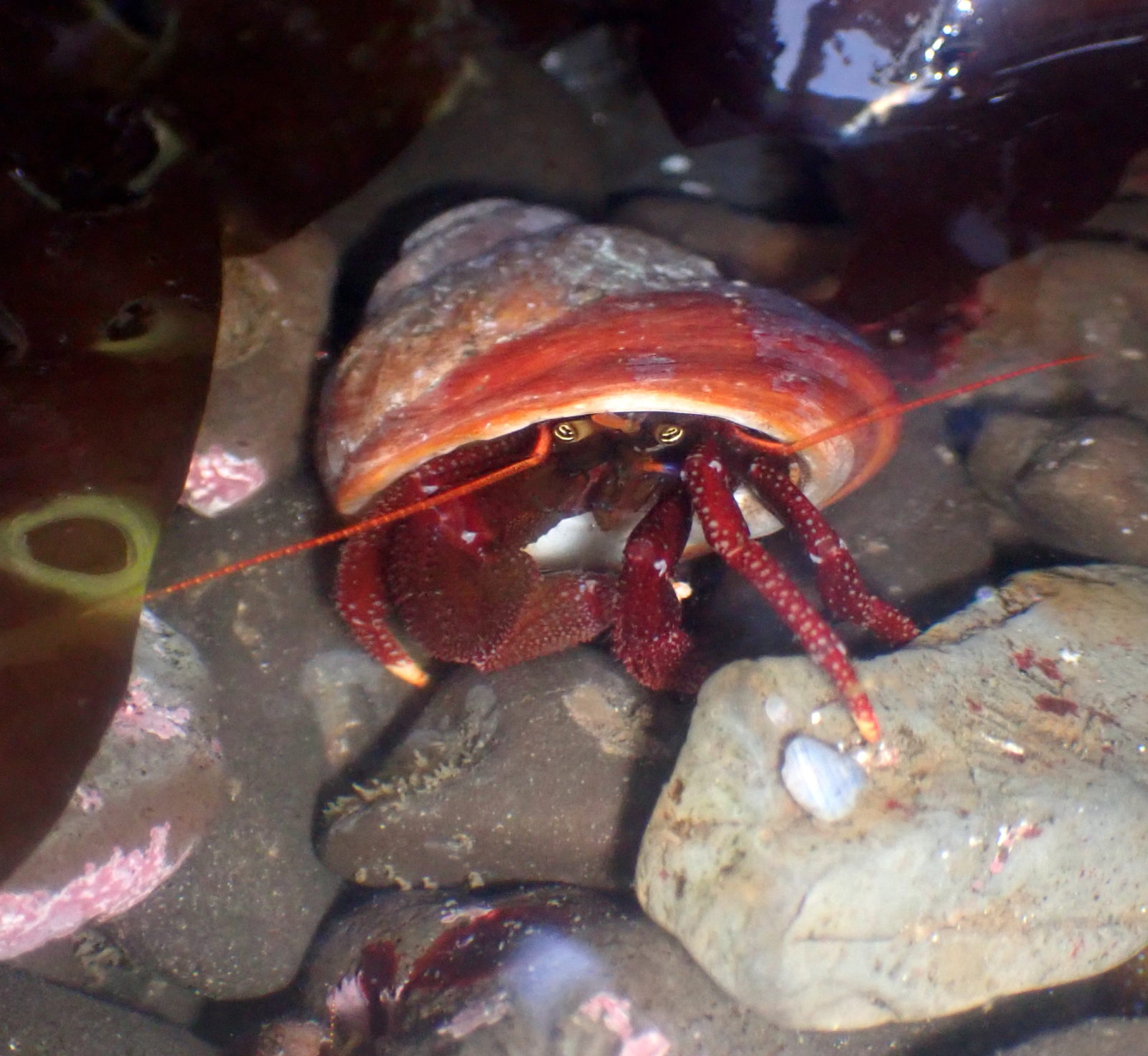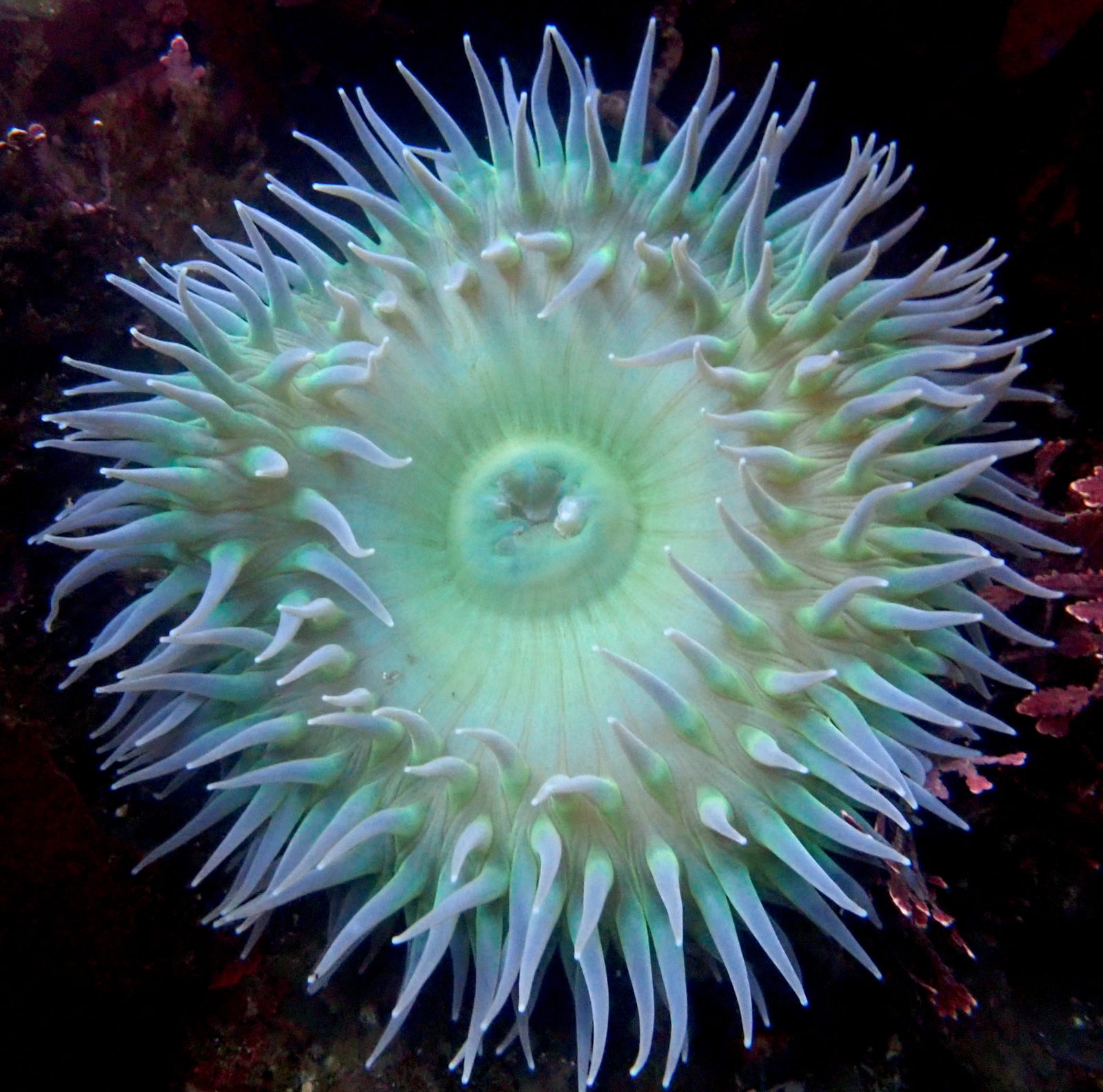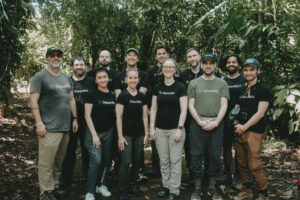Kids walk up and down the length of the dock. A lone Canada goose floats just feet away, quietly observing the small party of people who lie with their bellies flat against the dock’s surface, their heads peeking out over its edge. The docks rise and fall slightly as the waves roll beneath them, and the people peer down the length of the dock supports below – exploring, seeking, and documenting.
This was the Bay Nature–led “bioblitz,” or species-identification gathering, held at Jack London Square on July 1, contributing to Cal Academy’s Snapshot Cal Coast program.

This year’s Snapshot Cal Coast featured 4,083 people logging 46,683 observations of almost 4,000 species into the iNaturalist app from June 13 to July 4. Among the most observed species were the Striped Shore Crab (Pachygrapsus crassipes), the Ochre Sea Star (Pisaster ochraceus), the Western Sea Gull (Larus occidentalis), and the Opalescent Nudibranch (Hermissenda opalescens).
“Snapshot Cal Coast is an effort that we here at the Academy run to document coastal biodiversity for about two weeks every summer, along the coast of California,” said Rebecca Johnson, Co-Director of the Center for Biodiversity and Community Science at Cal Academy.
Snapshot Cal Coast began in 2016 and has gained momentum each year since, with more observations made and more species counted each consecutive year, save for 2020.
In total, across all years and time frames — including those prior to 2016 — more than 2 million iNaturalist observations have been made by more than 80,000 observers in the coastal areas surveyed for this project.
The growth in participation in the Snapshot events each year likely reflects not just the growing interest in the Snapshot Cal Coast program but also the growing interest in iNaturalist in general, Johnson explained. iNaturalist has added more than 50 million observations since September 2020 alone.

The iNaturalist platform provides a social network for sharing observations and specimen identifications. Snapshot Cal Coast observations are logged in a particular iNaturalist project, or repository of sightings, helping to create an image of coastal biodiversity for that year.
“In the years preceding 2016, we’d seen a lot of changes in the intertidal, like things moving further north and the species composition changing, and we knew that this was happening up and down the entire coast,” Johnson said.
“Our volunteers at Pillar Point were some of the first people to observe these differences, because they’re there all the time…. We thought, what if we could scale that — not just the data collection, but also having people that monitor right in place.”
And so, Snapshot Cal Coast was born. The inaugural Snapshot Cal Coast event featured 621 individuals making a total of 9,624 observations of about 1,500 species.
In the years since, Cal Academy has partnered with a number of different organizations for this project, and funds from the California Ocean Protection Council support efforts made by data scientists Dr. Natalie Low and Low’s predecessor, Dr. Gio Rapacciuolo, to utilize this community-collected data.

Dr. Rapacciuolo used Snapshot Cal Coast data to hindcast and examine occurrences such as Sea Star wasting disease, which in 2014 ravaged populations of star fish — especially the Sunflower Sea Star and the Pink Sea Star.
In addition to shedding light on the past, Snapshot Cal Coast data has helped to provide an image of present-day coastal ecosystems in California. With it, scientists have been able to construct a number of species distribution models, or representations of the geographic range in which a given species can reasonably be expected to occur.
“The goal is for me to take that data that is generated from all these iNaturalist observations and be able to clean the data, format the data, filter the data, so that we are able to say things about what’s happening along the shore,” Low said. “What we’re especially interested in is looking at these data as a way of detecting shifts in species ranges with climate change.
“Then, the next step is to project that out into the future. What are these conditions going to be going forward? Where are the places that are going to experience the biggest shift in terms of environmental conditions? How do we expect these species to change?”
Pairing Snapshot Cal Coast data with predicted future ocean conditions from ocean and climate modeling programs such as the Regional Ocean Modeling System helps to forecast changes in species distributions and ranges that our California coast might experience in the future, Low explained.
The project analyzes iNaturalist data from more than just observations recorded during the designated two-week period. “Snapshot Cal Coast is the way we mobilize people … but we use data from all year round,” Johnson said.
For the 2022 Snapshot Cal Coast, Low and Johnson journeyed to Pescadero Point and Pistachio Beach to record their own observations.
“I used to survey with all the equipment — you bring out buckets of all this stuff laid out, and it really was a lot simpler to just go out with your phone and take pictures and just be looking for things with people,” Low said. “It’s a lot more accessible to anyone who wants to do it.
“I could take my friends who have no training, and they could do this, which is really nice because I think it gives people a way to help out and just learn more about what is out there and become more engaged.”

Each of the 80,000-plus people who have engaged with this project have played a role in stitching together this state-wide understanding of our coastline.
“Individual people, making observations about something they’re curious about in the tide pool — taking a picture of a nudibranch or a shell — their individual observation helps them learn about species and the beach and biodiversity and be more connected to that place in a different way,” said Johnson. “All those people doing that, up and down the state at the same time, gives us this picture that our state, in the future, will be using to make decisions about how it’s managed and cared for, for biodiversity. To me, it’s just so powerful. It’s people’s observations that could make a difference. There are a lot of steps in between, but that in my job I get to kind of create that pipeline is really, really exciting.”





